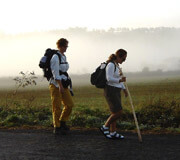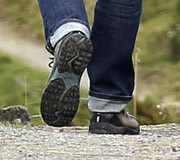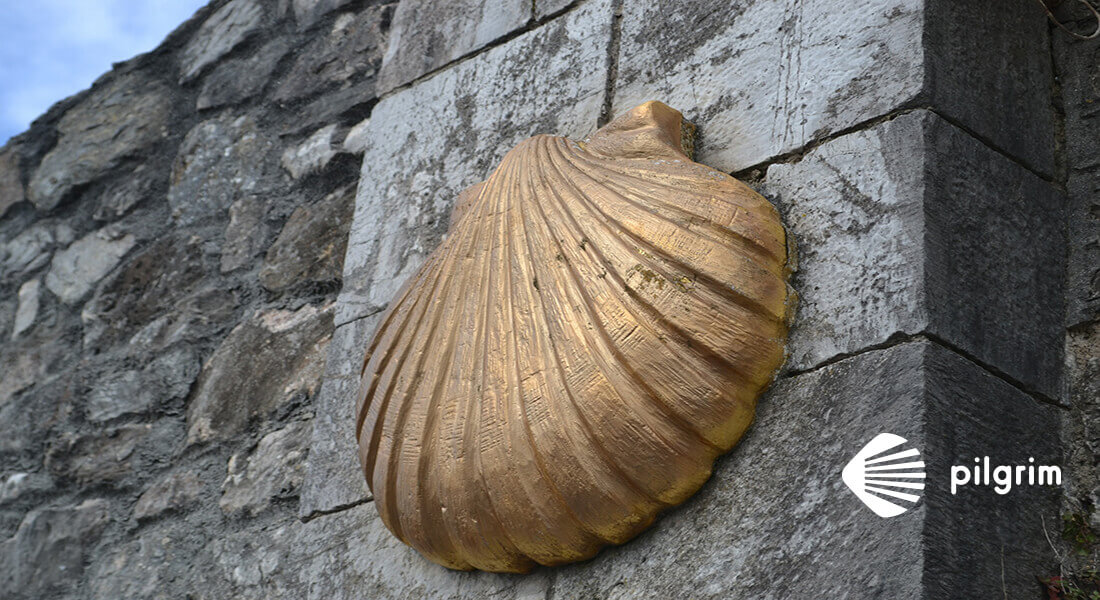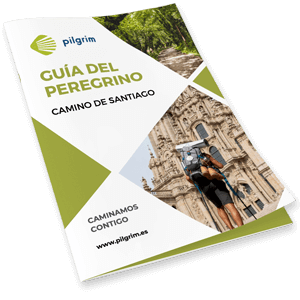- Index
- Why walk the Camino
- The BEST route
- When to begin
- How to do it
- How many days
- What type of accomodation
Many pilgrims begin to plan with enthusiasm the Camino de Santiago months in advance.
In order to take into account all the necessary factors in this planning, we want to show you these tips to organize the Camino de Santiago.
YOU MAY ALSO BE INTERESTED IN: HOSTELS ON THE CAMINO DE SANTIAGO
For many it will be their first adventure, for the most experienced it will be another time with a rucksack on their backs and a new credential to be stamped to continue adding experiences.
Some questions that may arise and that you will need answers to are, among others: if you need or not of physical preparation, the things you should not forget to pack in your backpack, etc. Some of them will be discussed in this Guide.
I HAVE ALREADY DECIDED
On the other hand, if you already have answers to all the previously frequent questions, congratulations, you already know everything you need to know. Shall we help you plan?
If on the other hand you still have your doubts, let’s start answering some of the questions above but without limiting ourselves to what is written.
As you know, there are as many different Caminos as there are different people, so our answers and even our questions may not resemble yours in any way, but they will serve to awaken your own concerns and give you room for reflection when planning your trip.
REASONS TO DO THE CAMINO DE SANTIAGO
Each pilgrim has their own reason for setting out on their journey. There are countless reasons that drive us to do it, from religious, spiritual, cultural, sporting and many other reasons that become merely anecdotal when we set foot for the first time in the Plaza del Obradoiro and we realise that we have achieved our goal.
At that moment the reasons that led us to start are relegated to the background and the mixture of emotion and feelings produced by the sight of the Cathedral of Santiago rising above our eyes is the only thing that has a place at that moment.
However, we all have a reason for taking the first step, and in most cases the most common reasons are the following:
RELIGIOUS
Since the discovery of the remains of the Apostle St. James and the city became one of the greatest exponents of the Catholic religion, the Way of St. James has attracted thousands of the faithful who, since the Middle Ages and moved by faith, have made the pilgrimage to Compostela to ask the Apostle for protection in the wars that were about to be fought in the Holy Land.
Nowadays, it is no longer the Templars who come to Galicia in search of protection, but there are thousands of believers who seek an act of faith on the Way and come to the Galician capital to redeem themselves of their sins or to fulfil an offering made to the Apostle St. James.
SPIRITUAL
More and more pilgrims are not limiting their journey to a purely religious reason, but are doing the Camino for a spiritual reason, almost meditative, which allows them to find themselves, meditating along the paths and realising that for a few days, the Camino de Santiago makes them equal and allows them to meet people with the same concerns as themselves.
CULTURAL
If something abounds in the Camino de Santiago is the cultural and patrimonial richness. From the oldest route such as the Primitive Way, to other very popular alternatives such as the French Way or the Portuguese Way, there are numerous works of art ranging from hermitages, churches and crossroads to imposing Gothic or Romanesque cathedrals.
NATURAL
All along the routes, especially if we travel through the green Spain of the north of the peninsula or once we enter the Galician community, we will find before our eyes a thick green mantle that will make us forget any hint of worry and will take us away from the mundane noise, transporting us to a scene of peace and tranquillity.
SPORT OR SELF-IMPROVEMENT
For many of those who embark on the Camino de Santiago for the first time, this step is much more than a purely tourist trip, is the ability to overcome desertion capable of completing the journey that separates the origin of that symbolic goal. More than a point of arrival, it is a turning point in the way of facing life.
SOCIAL
Although for the pilgrims most rooted to the essence of the Camino it is a step backwards to see that this has become a social phenomenon, the truth is that it is so.
Today, this adventure is a point of coexistence with other cultures, of meeting new friends and fellow travellers, and of course, it is a new way of discovering parts of the peninsular geography that otherwise we would probably never visit in our lives.
WHICH CAMINO DO I TAKE?
After having thought about the reasons for setting off, it is time to choose the route.
If we seek to fulfil the most faithful essence of the Jacobean tradition and the ancient pilgrimages, we must start the Camino de Santiago at the door of our own home and move forward until we can link up with one of the existing routes.
Nowadays, people choose to go to one of the main starting points of the different routes and from there follow the stages that separate that point from the city of Compostela.

We must bear in mind that the choice of our route will also depend on the time of year in which we are preparing to make the pilgrimage, since each of the different alternatives has advantages and disadvantages depending on the time of year; this will be discussed in the next section.
CAMINO FRANCÉS (FRENCH WAY)
Thus, the French Way is presented as the favourite route for most pilgrims given its wide range of accommodation and its rich heritage and landscape.
It is the most crowded route in the central months of the year, so if you are looking for relaxation and calm, there may be other more advantageous options for you that preserve the same visual and architectural richness along the way.
CAMINO PORTUGUÉS (PORTUGUESE WAY)
Like the French route, the Portuguese Way has a good range of accommodation and services along the entire route. A
The last 100 km (from Tui) of the Portuguese Way can be done in a very special way, and since this is the minimum distance to obtain the Compostela, it is also the most frequented stretch.
CAMINO PRIMITIVO (PRIMITIVE WAY)
The Primitive Way is a wonderful option for discovering the true roots of the pilgrimage, as it was the first pilgrimage route to Santiago de Compostela. It offers as much availability of accommodation and services as the French or Portuguese Way, and in addition, it offers a less crowded route through more mountainous areas. At Melide, it connects with the route of the French Way.
CAMINO DEL NORTE (NORTH WAY)
If, on the other hand, you are looking for an option in which you can completely abstract yourself and with a smaller number of pilgrims, the Camino del Norte is undoubtedly your best option.
It has a good range of accommodation and services, which although not yet as complete as the options mentioned above, is sufficiently broad and has sufficient guarantees of quality to meet the needs of pilgrims.
You will also enjoy places reserved for the magic of this route, such as the majestic town of Ribadeo and its beach of the Cathedrals.
CAMINO INGLÉS (ENGLISH WAY)
Like the Camino del Norte, the English Way is a route with fewer pilgrims. In any case, it has all the same facilities and accommodation as the previously mentioned routes and you can enjoy places such as Betanzos, the city of Ferrol or the city of A Coruña itself.
This last city has gained much prominence in the Jacobean culture thanks to the recent proclamation of the slope that starts from the city as an official route.
CAMINO DE INVIERNO (WINTER WAY)
There are Camino options that depend very much on the seasons of the year in which it will take place, in this case the Winter Way, as its name suggests, is a path created at the time to enter Galicia, through the province of Ourense,, and thus avoid the heavy snowfall that occurs in O Cebreiro during winter season.
VÍA DE LA PLATA (SILVER ROUTE)
Due to the high temperatures that usually occur in the communities of Andalusia and Extremadura, which is where the route of this Jacobean route, the Vía de la Plata, takes place, it is not recommended to do this Camino route in summer or hotter periods.
However, there are times, such as autumn or spring, when a much better journey is possible.
CAMINO DE FISTERRA-MUXÍA (FISTERRA AND MUXÍA WAY)
In any case, whichever route we choose, we should not miss the opportunity to make one last effort and continue a little further along the Fisterra – Muxía route.
We will find one of the most beautiful pictures of the whole planet, where the sun merges with the sea and where the pilgrim finds the last answer he was missing on the Camino.
You won’t regret it if you decide to attend to see the end of the world, we will help you not to miss this great moment.
ARE YOU STILL UNDECIDED ABOUT CHOOSING YOUR WALK TO SANTIAGO DE COMPOSTELA?
In another post we talk in much greater depth about the question of which route to choose within the Camino de Santiago, where we discuss more in depth each route, its accessibility, which are better according to age and some curiosities, which will help you make a definitive decision.
WHEN DO I WALK THE CAMINO DE SANTIAGO?
Several factors must be taken into account, ranging from the weather to the availability of accommodation depending on the time of year.
First of all we have to be clear about which route to choose, as we have mentioned before, and then we can decide on the best date, based on your personal possibilities, to escape to this adventure.
AUTUMN AND WINTER
If you are looking for peace and serenity, you should definitely choose the off-peak seasons, i.e. autumn and winter.
There we will be able to enjoy total tranquillity on our way, but on the other hand we will find problems in addition to the cold and rain, such as the case of numerous hostels that are closed because they are in the low season and will not reopen until March, or numerous services that are not available for the same reason and for the same period of time.
SPRING AND SUMMER
If, on the other hand, we want to enjoy the Camino with optimal temperature conditions and with all the services and accommodation already in place, we should choose the spring months of May and June,or the transition from summer to autumn, between September and early October.
The greatest explosion of pilgrims on the Camino de Santiago occurs during the central months of the year; June, July and August have become in recent years in the three months where most people have decided to walk any of the different variants.
This is due, in large part, to the coincidence of these months with the holiday periods of pilgrims from the Spanish territory itself, added to the conditioning factor of being one of the best times to find a 100% hotel offer, and a chain of services at full capacity in order to make the journey easier.
OUR RECOMMENDATION
As we commented in a previous blog post on what time of year is best for pilgrimages, we recommend the Spring and Autumn seasons.
In these seasons, we will be able to make our walk to Santiago de Compostelas without problems of too high or too low temperatures. In addition, we will not find large numbers of pilgrims so we will have company but more relaxed than in the summer season.
HOW DO I WANT TO DO THE CAMINO DE SANTIAGO?
There are different ways to make our pilgrimage, but the three most common are undoubtedly the following:
ON FOOT
9 out of 10 pilgrims choose to walk the Camino. It is an opportunity suitable for anyone, given that the difficulty can be adapted to very short and personalised routes depending on our physical preparation,although of course, it is ideal to have a certain amount of experience in hiking and an active lifestyle prior to completing the stages.
BY BIKE
More and more people are choosing to do the Camino de Santiago by bicycle.
Our advice if you choose this mode is to have a good previous physical preparation, a bicycle suitable for the trails you will find and a good previous planning of the stages.
You must take into account extra factors such as respect for pilgrims on foot to avoid accidents and the priority of these in public hostels, which will cause that a good option for you is to look for private hostels where the cost is not very high and that allow you to protect your bike with good security guarantees.
ON HORSEBACK
This means of transport has also been gaining prominence in recent years, although the number of pilgrims who opt for it is still merely anecdotal compared to the total number of pilgrims.
According to official statistics from the Pilgrim’s Office, in 2016, 345 riders arrived in Santiago after completing the pilgrimage on horseback.
There are already many shelters and lodges with adapted stables and boxes, however, for the safety of the animal and for compliance with existing health regulations, we recommend that, for this option, you always have good advice beforehand to plan all aspects in a safe and efficient way.
EXTRA: BY KAYAK
It is a new form of pilgrimage that is beginning to gain popularity.
The route starts in O Grove and ends in Santiago de Compostela, along the Ría de Arousa, passing through clam and oyster farms and visiting the best beaches on the Galician coastline.
This route commemorates the last journey by sea of the Apostle’s remains.
CAN WE HELP YOU DECIDE?
We have a variety of routes mapped out for you, from walking, cycling or kayaking, and then whether you decide to do it alone or in a group, it’s your choice!
HOW MANY DAYS WILL IT TAKE ME TO DO THE CAMINO DE SANTIAGO?
This question is fully customisable for each individual case.
Although there are stages that have been established as predetermined in some way, there is no obligation to do the stages in the way they have been defined; many have been popularly defined as such because of the availability of accommodation or services, others because of an average duration per stage within the layout of a given route.
The ideal is to tackle the stages with an optimal duration for one’s own condition.
If we have to split the stages in two because we have some impediment that prevents us from doing the predetermined stages, there is no problem, we just have to plan it in advance so that we can find accommodation in the place where we plan to finish the stage.
There is no specific number of days to complete the Camino, however, as a reference, we have an estimate of an average of 20-25 km per day walking, so in the example of completing the last 100 km of one of the routes to obtain the compostela it would take an average of 5 days..
CAN WE HELP YOU TO CALCULATE THE STAGES OF YOUR JOURNEY?
From Pilgrim we offer the opportunity to make a brief and simple form, in order to have how many stages the pilgrim who hires our services wants to make, and so we can draw the route and the stops in the most personalized way possible.
WHAT TYPE OF ACCOMMODATION DO I CHOOSE FOR MY STAGES?
Again, the choice of this point is completely open.
The network of hostels on the Pilgrims’ Route to Santiago de Compostela has become more extensive year after year, both public and private.
A constraint in this regard is that in most cases these are rooms with a large number of beds, in double bunk beds and with shared bathrooms, which may be insufficient for some people.
For this reason, the offer has been growing gradually to the Jacobean phenomenon and today we have a wide variety of accommodation on the different routes ranging from hostels, guesthouses and hotels, to Paradores de Turismo or Pazos and Casas Rurales of high category for a growing demand in recent campaigns.
After all these reflections we must only assess whether we want to do the Camino alone or in the company of someone we know, or as another option, look for a group of pilgrims who match our choices and with whom to share this adventure.
In any case, this is a totally personal choice that takes into account many of the previous answers, especially the reason why we want to set out.
EXTRA ADVICE
LIST TO PACK YOUR LUGGAGE
Many people ask us questions related to this and, although we have already made an entry on what to carry in your backpack during the Camino, we leave here a small list as an excerpt:
- A suitable backpack (light, anatomical and waterproof)
- Comfortable boots that have been worn before
- Hiking clothes: as little as possible and adapted to the time of year
- Underwear and socks without seams
- Rain jacket and windbreaker
- Cap or hat
- Pilgrim credentials
- High Protection Sunscreen
- Sleeping bag (some hostels only offer sheets and you will appreciate a warm coat on cold nights)
- Towel (preferably made of microfibre, polyester and polyamide, as it will dry quickly and will not weigh down your back)
- Flip flops for the shower and personal toiletries
- Lantern and reflective elements for our body
- First-aid kit (plasters, gelatin dressings, mercurochrome or betadine, alcohol, painkillers and anti-inflammatory drugs)
- Health card and identity card
The most important thing to take into account and that can never be missing neither in our planning nor in our backpack, is the illusion and the desire to enjoy this wonderful experience and discover the magic that is hidden in the Camino de Santiago.
If after all these tips to do the Camino de Santiago, you have decided or feel the urge to make the pilgrimage, plan it as soon as possible!
Ultreia Pilgrims!
Plan your adventure!
We give you all the information without any commitment!






